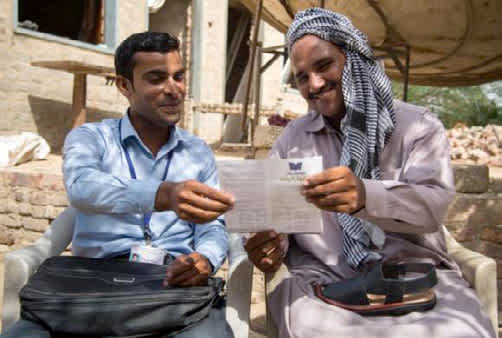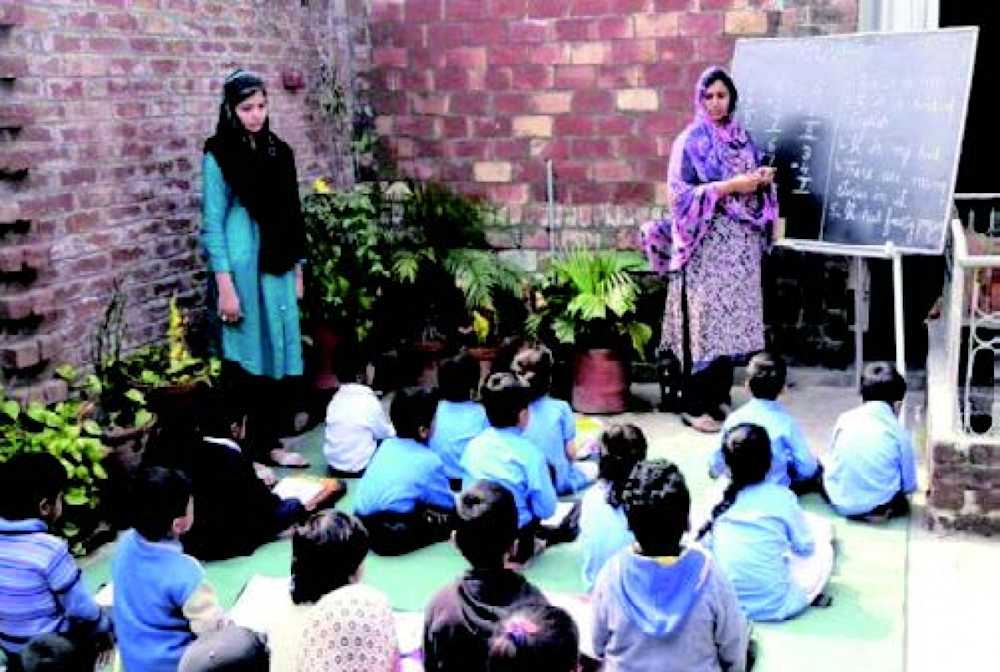Impact Investing
ESG way beyond negative screening
It is time to debunk some myths and explain how ESG can be fully integrated within the risk management process.

In late 2019, responsAbility reached a significant milestone with 10 bn USD invested in private debt and private equity across 90 emerging countries and 500 companies. Operating in a specific niche known as “impact investment”, this success would not have been possible if we had not adopted, at an early stage, Environmental, Social and Governance (ESG) criteria which have helped us in shaping our portfolio by preventing negative or unintended adverse external factors. At a time when APAC investors seem to be lagging behind their European and US peers, it is time to debunk some myths and explain how ESG is fully integrated within the risk management process.
What is ESG?
As an early adopter of ESG standards, our approach consists of using a set of standard indicators to screen potential investments, such as:
Environmental criteria that look at a company performance as a steward of the natural environment;
Social criteria that examine how a company manages relationships with employees, suppliers, customers and the communities where it operates; and
Governance which deals with leadership, executive pay, internal controls and shareholder rights.
There are several sets of standards available which, sometimes, can create some level of confusion – a good starting point is to look at standards suggested by the International Finance Corporation (IFC), the private sector arm of the World Bank Group.
What is ESG versus impact?
For responsAbility, ESG is a necessary approach to identify and mitigate the risks, although this is not sufficient to drive change. It is only one selection criteria within our investment process. We actually select high impact companies defined by a set of measurable impact themes, all related to the Sustainable Development Goals.
What are the main steps of an ESG assessment?
Any ESG assessment starts with an exclusion list. Typically, this would include tobacco, child labour, trade in wildlife and certain pesticides. But- and this is very important- it should not stop there: The E&S management system should also be used to identify both E&S opportunities as well as risks. Compliance with E&S standards is part of a business’s key success factors. Ultimately, well- implemented and effective E&S management can contribute to increasing quality (improved input, production and operating standards), lower costs (improved resource efficiency and staff retention) and thereby increase productivity.
ESG assessment does not end with an exclusion list. The ESG risk profile and management risk profile is assessed for every part of our portfolio. The potential investee is then given an ESG risk profile. All risks are considered in the context of inherent sector risks, the scale of the company’s operations and whether the investment involves new or continued operations and locations. As we are sector thematic, we invest mainly in three sectors: Financial inclusion (microfinance, SME banks, leasing companies, Fintech); sustainable food and climate finance where the type of risks linked to environmental, social and governance criteria are intrinsically very different.
Defining the ESG profile of a portfolio
70% of our investments are categorized as low risk while 30% are categorized as medium risk- we follow up on the investees periodically to measure the progress and make sure they make progress on the flagged areas- in other words, mitigation measures are introduced before an investment can be taken further. For example, a small-scale hydropower plant could create issues for the local environment and community unless the right measures are introduced early on in the process. We do not have any investment classified as high risk in our portfolio as it could create irreversible damage in our portfolio.
How is the process fully embedded in our investment approach?
Let’s take a look at our ESG assessment in one of our asset classes, namely sustainable agriculture equity investment. At a minimum, all companies are expected to operate in compliance with the IFC standards. For the “E” side, it is also expected that the companies conduct an environmental impact assessment to identify risks linked to loss of biodiversity, emission of greenhouse gases, degradation of water quality and air quality, etc. For the “S” side, investee companies are expected to pay wages that meet or exceed industry or legal national minima, treat their employees fairly, and create structures to allow for work-place consultation to give employees the opportunity to present their views to management. For the “G” side, investees are expected to assess the health and safety risks arising from business activities and to take appropriate action to eliminate or reduce risks to health and safety.
Preparing the due diligence
The on-site due diligence allows us to additionally verify the desk- based findings and to extend the due diligence to those checks that can only be assessed on the ground, such as inspecting operating and working conditions. Furthermore, the due diligence process may extend beyond the investee company. The assessment will look at the local area beyond the property line to assess induced or cumulative impacts on the community and environment, as well as up and down the supply chain. We rely on internal ESG specialists as well as external specialists to produce an environmental and social impact assessment. The risks are ranked in order of priority based on the severity and likelihood of occurrence of any potential negative impact. Alongside this, the mitigating measures and opportunities for improvement are considered in the context of ESG, their ease of implementation (taking into account costs for instance) and the likelihood of their effectiveness. As a result of this analysis, a draft action plan for improvement is then formulated. The action plan details each ESG concern with its risk level, actions required to mitigate the issue, a time frame for implementation, the proposed monitoring programme, and the costs involved.
Engaging with the company
The final action plan will be prepared in consultation with the management of the investee company. The ESG analysis, including both risks and opportunities, is submitted to the investment committee when making a final decision on the investment. It is presented as an integral component of the investment proposal at the investment committee level and the proposal will clearly articulate whether measures are required over the investment period.
Monitoring the ESG risks
Monitoring ESG risks is a good way to engage and maintain the dialogue with the investee. It includes regular interactive reviews of progress on the action plan for ESG improvements with the management of the investee companies. Representation on the Board of the investee companies also allows to gain influence on an on-going basis and helps to monitor and improve corporate governance of the investee companies. Site visits are also required on a regular basis.

Case in point: 10 years later, what are the benefits for one of our investees, Khushhali Microfinance Bank?
A good example of our early approach in introducing ESG for one of our frontier equity investments can be seen in Pakistan where we took a participation into the Khushhali Microfinance Bank. Pakistan is an underbanked market with tens of millions of underserved customers. The country is a gateway to central Asia with the China-Pakistan Economic Corridor (CPEC) project promising continued economic growth, trade, and development. Khushhali Microfinance Bank (KMB) was set up in 2000 by the government of Pakistan. KMB’s objective was to provide microfinance to the rural poor, in particular loans to small farmers. After a successful start, KMB’s progress had plateaued after 10 years, with low profitability and slow growth. Its product portfolio was too narrow and its lending was spread too thin with very small loan sizes meeting only part of its customers’ needs.
After the shareholders decided to restructure the KMB’s ownership, responsAbility Investments (rA), along with a consortium including the United Bank Limited and other PE firms bought a controlling stake in 2012. At the time, the bank had a balance sheet with assets of USD 92 million and was generating a mid-single digit Return-on- Equity (ROE). With a head office in Islamabad, it had branches across most of Pakistan’s provinces with a particular focus on Punjab, the top agricultural province. At responsAbility, having worldwide experience as partners with microfinance and SME banks, we recognized the importance of transforming the bank from a narrow- based group lender to a diversified financial institution. To this end we took several initiatives.
On the “Governance” front, we introduced and nominated a senior microfinance bank transformation expert to the Board of the bank, providing crucial guidance on strategic and operational matters, including business planning, profit-center driven branch management, deposit strategy, and product development. As a renowned corporate governance expert, he also contributed to bringing Board procedures to international standards. We then identified and appointed a seasoned product development consultant to drive the development of a new MSME loan product.
These initiatives had a very positive impact. It allowed the replacement of informal sources such as local moneylenders that charged exorbitant interest rates for short term loans. Further, savings and money transfers offering an interest-paying safe store of money supported and encouraged low cost remittances from urban to rural areas. More specifically, it resulted in:
A tripling of the average loan size that allowed the bank to serve its customers more fully and to further reduce their dependence on informal loan sharks, even as the bank had almost tripled its number of customers to more than eight hundred thousand.
Profit-driven branches meant increased financial intermediation, with lower cost of funds which ultimately supported lower cost loans for borrowers, based on increasing the deposits-to-loans ratio from ~65% to more than 100%.
MSME loans being offered from virtually all of the Khushhali’s 175 branches and hundreds of staff members having been trained in MSME credit assessment. With up to 3 million MSMEs lacking access to appropriate financial services, the new product overwhelmingly contributed to filling an immens demand for such financing among Pakistani entrepreneurs.
This turned the bank around, with loan growth reaching 38% compounded over the past four years, with a strong deposit base fully covering the loan portfolio, and generated a healthy ROE providing firm support for futuregrowth, resulting in a balance sheet with assets of more than USD 500 million USD as of December 2018. The Consortium partners and the KMB management team collaborated closely to drive these changes.
In conclusion, ESG investment criteria and monitoring are critical risk management methods that contribute to sound investment practices. Not only is it a compass for the sustainable investment community, it is part of standard investment criteria. At responsAbility, it is fully embedded in our investment process and our belief is that it will become mainstream across all the financial industry.

This article originally appeared in ESG in Private Equity Investing – A refreshed view, HKVCA Journal, Seventh Issue, Spring 2020, published by the Association for Private Capital in Asia, www.hkvca.com.hk.